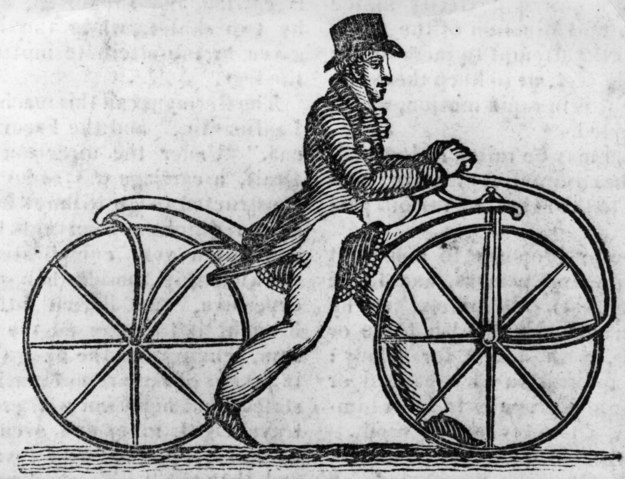1819: A man riding the patent “Accelerator” or “Walking Expedition”, an early bicycle invented by Baron Charles de Drais. Hulton Archive / Getty Images
There are a lot of stories about the risks of cycling in the news, and people are scared to get on their bikes.
Recent deaths in London have brought cyclists out in protest on to the streets of the capital.
But nationwide, people are worried about the risks of cycling. According to the 2013 British Social Attitudes survey, 61% of people say that it is too dangerous to cycle on the roads. That figure rises to 69% among women.
But while the deaths are tragic, the fear is misplaced. Cycling is getting safer in Britain, and has been for years.
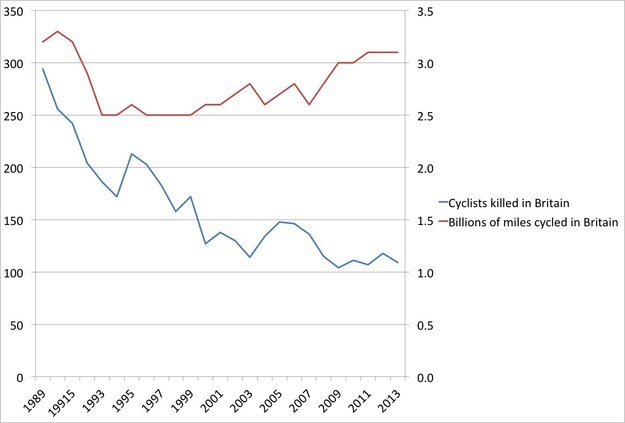
Department for Transport / BuzzFeed / Via gov.uk
The number of people who are killed has steadily dropped. But the number of people who actually cycle has been rising since 1994. Per mile, cycling is more than twice as safe as it was 20 years ago.
Even in London, where most people think it’s the most dangerous, the number of people killed or seriously injured has fallen significantly.

GLA / BuzzFeed / Via data.london.gov.uk
The actual number of deaths in the capital has dropped by more than half.
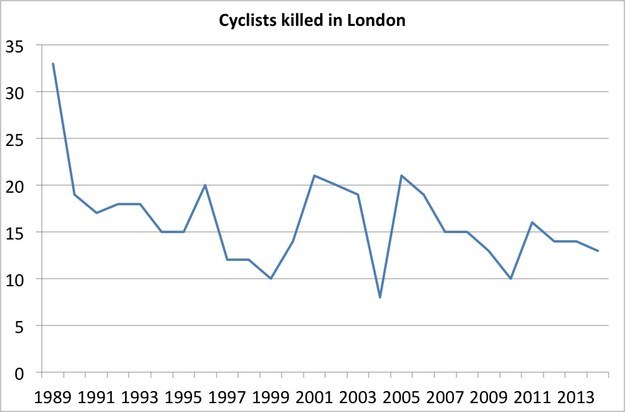
GLA / BuzzFeed / Via data.london.gov.uk
Despite the number of people actually cycling in London roughly tripling in the last 15 years.
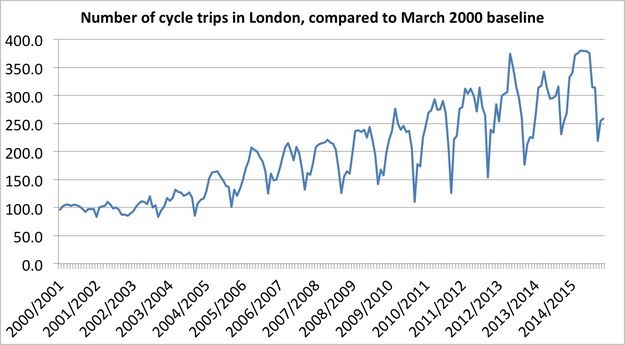
TFL / BuzzFeed / Via data.london.gov.uk
Cycling in Britain is so safe, in fact, that according to one estimate you’d have to cycle 100 times around the world before you’d be odds-on to die.

ThinkStock / BuzzFeed
Or to put it another way, there are about 25 deaths for every billion kilometres cycled. That’s safer, per kilometre, than walking. If you’re young, cycling is safer than driving, because young people tend to be riskier drivers.
And while you’re cycling, you’re making yourself healthier and longer-lived.
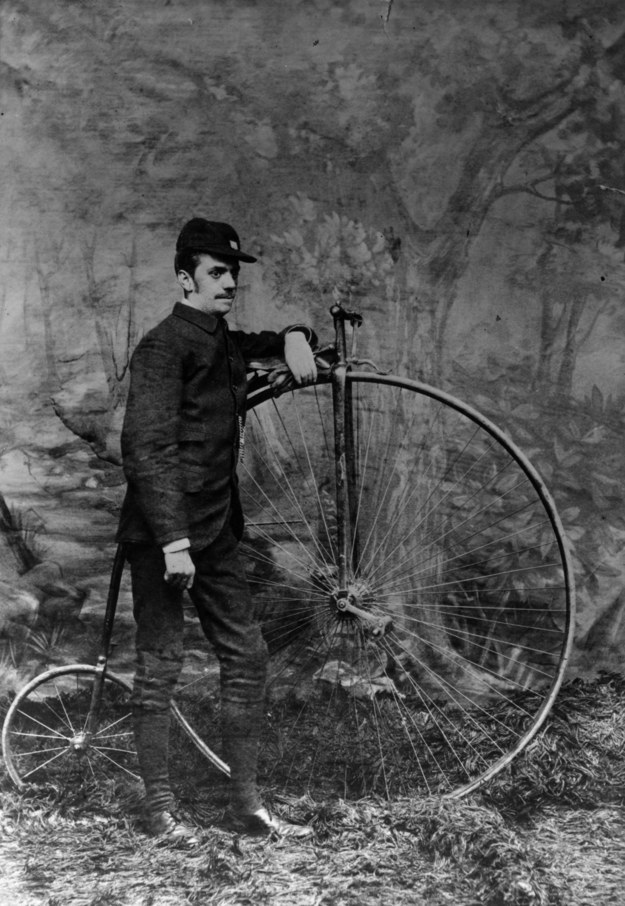
Hulton Archive / Getty Images
People worry about the risks of cycling. Not only the risk of accidents, but also the air pollution. But according to research published in the Journal of Environmental Health Impacts, even taking those into account, cycling adds about 9 times as much time to the end of your life as it is likely to take off, on average.
And this review of the evidence in the Scandinavian Journal of Medicine & Science in Sports found that people who cycle three and a half hours a week – that’s the equivalent of a 20-minute ride to and from work from Monday to Friday – are about 20% less likely to die of cancer or cardiovascular disease in any given year. They were also fitter and less likely to be obese.
The cycling charity CTC claims that cyclists live two years longer than the national average, and take 15% fewer days off sick per year.
It also might make you happier.
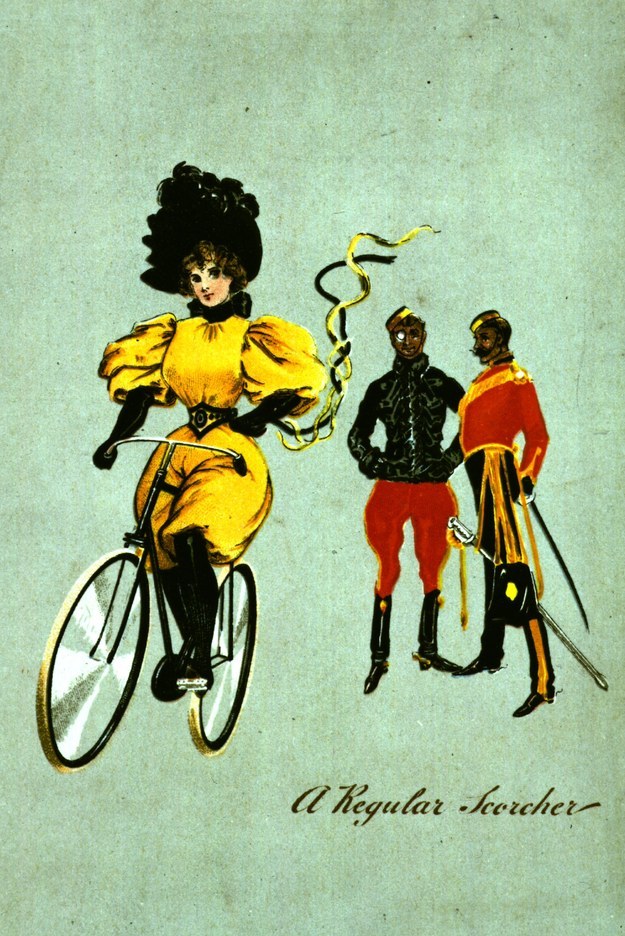
Hulton Archive / Getty Images
“Active commuting”, ie walking or cycling, seems to improve your wellbeing. Research published in the Journal of Preventative Medicine found that people who switched from driving or public transport to walking or cycling to work improved their score on a “wellbeing index” by around 0.5 points. For context, people in a relationship tend to score 0.43 points higher on the same scale.
More than that, if you cycle, you save lives. Partly because you won’t run anyone down in your car.
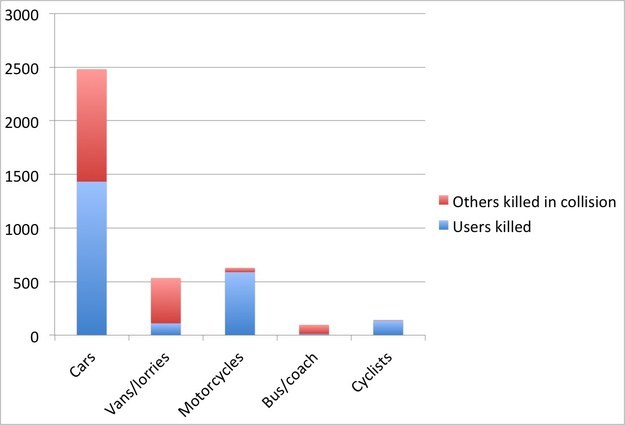
2007 fatalities. CTC / BuzzFeed / Via ctc.org.uk
If you’re in a crash in a car, then you might kill yourself – but you’ve also got a very good chance of killing someone else. More than 1,000 people were killed by being hit by a car in 2007. In that entire year, just five people were killed in collisions with cyclists. Every person who stops driving and starts cycling reduces the risk for everyone else who’s using the roads.
But also because, simply, the more cyclists there are, the safer cycling gets.
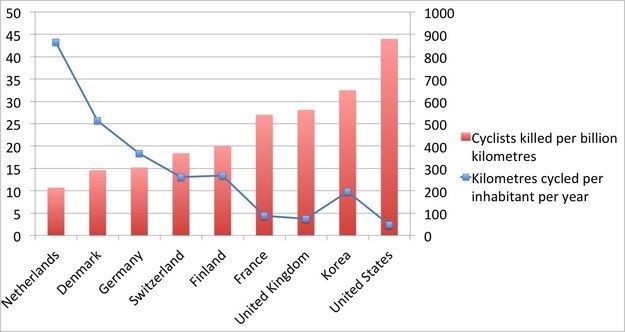
International Transport Forum / BuzzFeed / Via keepeek.com
Partly that’s because countries with more cyclists tend to have better cycling facilities (although that itself is because cyclists have more political influence). But it’s also because motorists are more aware of cyclists if they see them regularly. This is known as the “safety in numbers” hypothesis, and it is well supported by evidence.
Of course, there are things that can be done. For instance, a disproportionate number of the deaths in London are women crushed by lorries.
While women only make up a quarter of the cyclists in London, 33 out of the city’s 84 cycling deaths since 2009 – that’s 39% – have been women. An even starker statistic is that 27 out of those 33 were hit by lorries.
That may be related to the fact that women are more afraid of cycling, and less likely to take what appear to be risks. Hugging the kerb, cycling slowly, and being unwilling to overtake large vehicles are all believed to increase your odds of being in a collision with an HGV. Also, a leaked 2007 TFL report said “Women may be over-represented in (collisions with goods vehicles) because they are less likely than men to disobey red lights,” and so are caught in traffic as it moves away.
Something that could help fix that is to follow Paris’s example, where there were no deaths at all in 2011.
Paris banned all heavy vehicles driving in the city centre between 7am and 10pm. London bans them from driving at night, so they are forced to share the road with commuters, including bikes.
But overall, cycling in Britain is safer than it’s ever been, and more people are doing it than have done in decades.

Three Lions / Getty Images
And if you start doing it too, you’ll not only improve your own life, you’ll contribute to the safety of everyone else using the roads.










